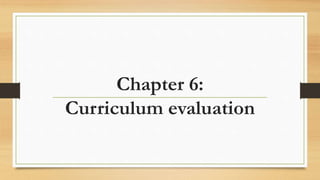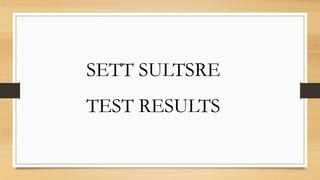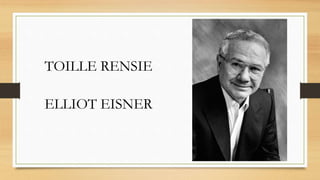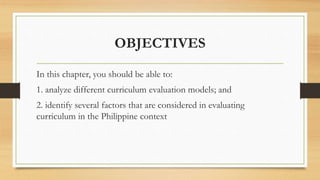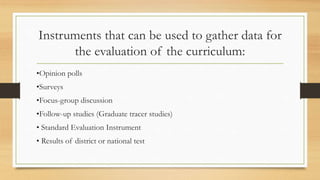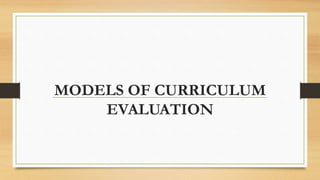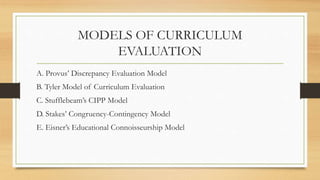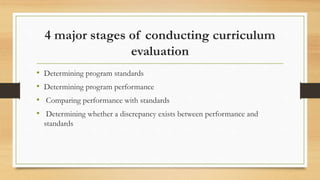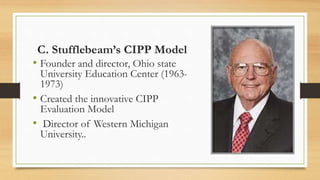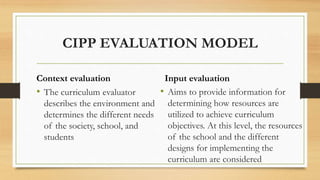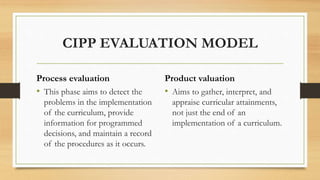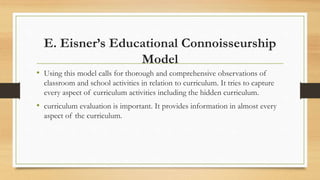This document discusses models of curriculum evaluation. It describes five models:
1) Provus' Discrepancy Evaluation Model which compares program performance to standards.
2) Tyler's model which involves establishing goals and objectives and comparing student performance to objectives.
3) Stufflebeam's CIPP Model which evaluates the context, inputs, processes, and products of a curriculum.
4) Stake's Congruency-Contingency Model which examines antecedents, transactions, and outcomes.
5) Eisner's Educational Connoisseurship Model which uses qualitative observation and interpretation to evaluate a curriculum.
